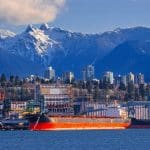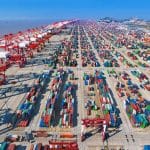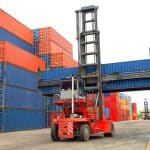CMA CGM REVAMPS US-LATIN AMERICA NETWORK AMID TRANSHIPMENT DELAYS
CMA CGM will reconfigure its current services connecting the US Gulf with Brazil in November and commence a new string between the US East Coast and West Coast of South America in December.
CONGESTION EASING AT BNSF ST. LOUIS, FORT WORTH TERMINALS
BNSF Railway has lowered container backlogs at two inland rail ramps as regional chassis shortages ease, allowing shippers to pick up freight more quickly.
CMA CGM LAUNCHES NEW SERVICE BETWEEN NEW YORK AND CHILE
The Americas XL service will provide all vessels operated by CMA CGM, and only direct service on the market connecting West Coast South America to USEC, with direct weekly connection from/to Port Everglades, Philadelphia and New York from/to Buenaventura, Colombia, Guayaquil, Ecuador, Callao, Peru, and San Antonio, Chile. The service will connect from/to US Gulf, East Coast South America, Mediterranean, North Europe via Kingston and Cartagena with competitive transit time from West Coast South America to US designed for perishables and fresh fruit with minimum 500 plugs per vessel.
LESS TRUCKS, MORE BARGES – US MARINE HIGHWAY INVESTMENTS
The programme which grew out of legislation passed in 2007, with the first grants coming in 2010, aims to remove truck traffic from motorways, and, instead, put its cargo onto the river system, or into intra-harbour trades. The best-known projects to date have involved container on barge routings on the Lower Mississippi River, and on the James River where Norfolk and Portsmouth are linked with Richmond, Va. it is noteworthy that the MARAD programme received $25m from the recently passed Infrastructure Bill. The 2022 awards included $5.7m to expand container handling capabilities at Guam, as well as two large awards on the US West Coast- $5.6, to San Diego- at the southern end of the “M-5 Coastal Connector,” a coastwise barge supply chain, and also $4.2m for expanding a barge service on the Columbia River in the state of Washington. On the East Coast, the inchoate container on barge services around New York Harbour, where the motorways are significantly deteriorated due to truck traffic, garnered a $5.2m award for constructing of six landside docking facilities to enable handoffs from vessels to landside vehicles performing “last mile” deliveries into populated areas.
U.S. IMPORT VOLUME HEADS SOUTH IN SEPTEMBER, BUT STILL ABOVE PRE-PANDEMIC LEVELS
U.S. container import volumes have finally started to fall off the proverbial cliff that some in the industry have been predicting for months. Data analytics company Descartes came out with a report Tuesday showing that total containerized imports into the U.S. fell by a precipitous 11% in September, to 2,215,731 TEUs, as a slowing economy, retailers reducing purchases, inflation and high fuel costs finally started to catch up to import throughput numbers at U.S. ports. Compared to August, September import volumes were down 12.4%. For comparison, August’s import volume fell just 1.8% year over year and remained about the 2.5 million TEU mark. The data shows that U.S. container import volumes in September moved closer to pre-pandemic levels, but though volume was still up 9% compared to pre pandemic in September 2019.
LOS ANGELES: UNPRECEDENTED YEAR INCREASES PORT EMISSIONS
Emissions from port-related sources increased in 2021 compared to the previous year, according to the Port of Los Angeles’ latest Inventory of Air Emissions. The 2021 results were significantly impacted by a series of supply chain disruptions, particularly cargo vessels anchored outside the port complex. Over the past year, private and public stakeholders have been successful in reducing congestion and ships at anchor, which will improve 2022 emissions.




